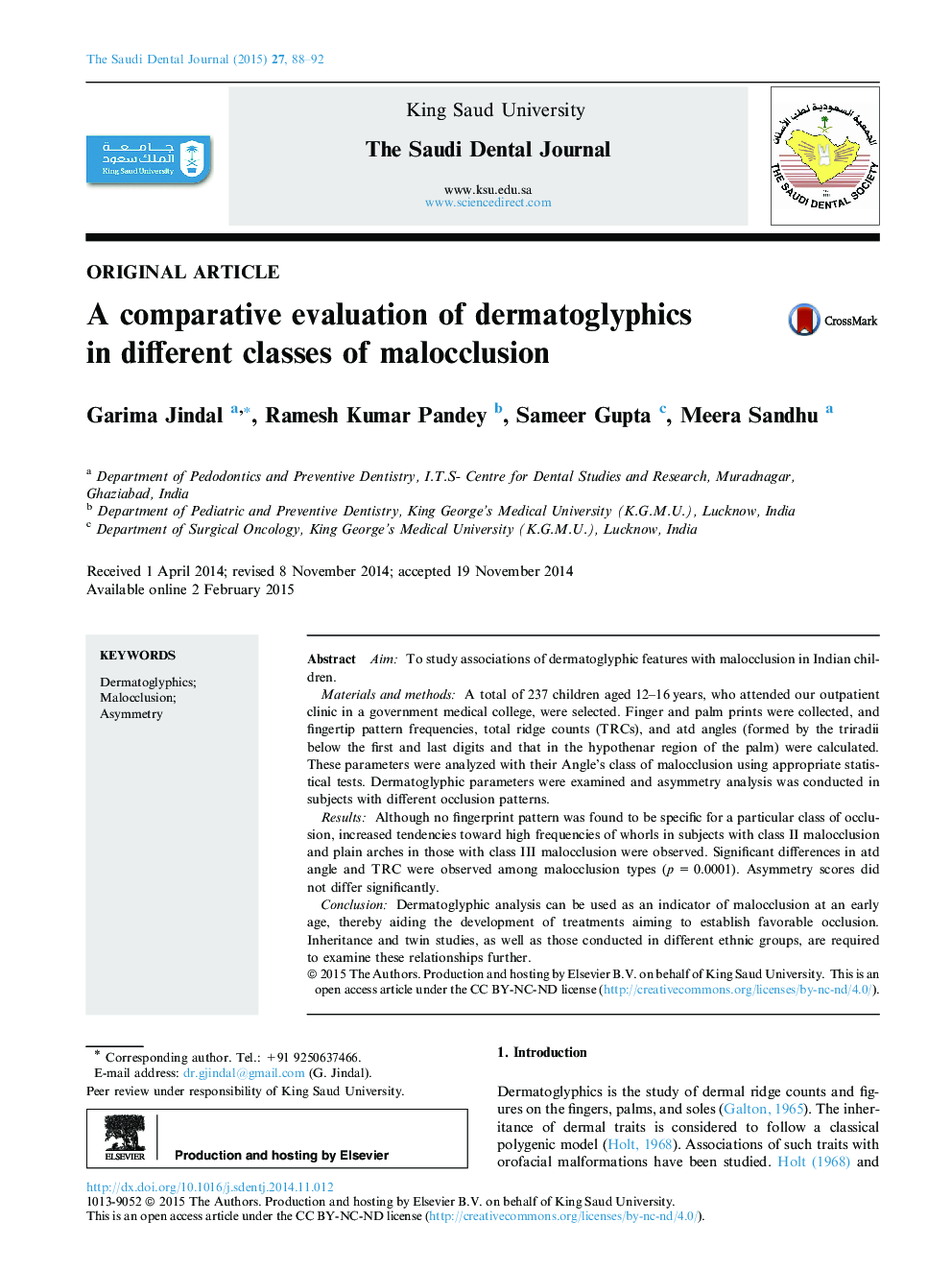| کد مقاله | کد نشریه | سال انتشار | مقاله انگلیسی | نسخه تمام متن |
|---|---|---|---|---|
| 2686229 | 1142942 | 2015 | 5 صفحه PDF | دانلود رایگان |
AimTo study associations of dermatoglyphic features with malocclusion in Indian children.Materials and methodsA total of 237 children aged 12–16 years, who attended our outpatient clinic in a government medical college, were selected. Finger and palm prints were collected, and fingertip pattern frequencies, total ridge counts (TRCs), and atd angles (formed by the triradii below the first and last digits and that in the hypothenar region of the palm) were calculated. These parameters were analyzed with their Angle’s class of malocclusion using appropriate statistical tests. Dermatoglyphic parameters were examined and asymmetry analysis was conducted in subjects with different occlusion patterns.ResultsAlthough no fingerprint pattern was found to be specific for a particular class of occlusion, increased tendencies toward high frequencies of whorls in subjects with class II malocclusion and plain arches in those with class III malocclusion were observed. Significant differences in atd angle and TRC were observed among malocclusion types (p = 0.0001). Asymmetry scores did not differ significantly.ConclusionDermatoglyphic analysis can be used as an indicator of malocclusion at an early age, thereby aiding the development of treatments aiming to establish favorable occlusion. Inheritance and twin studies, as well as those conducted in different ethnic groups, are required to examine these relationships further.
Journal: The Saudi Dental Journal - Volume 27, Issue 2, April 2015, Pages 88–92
